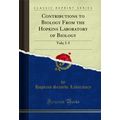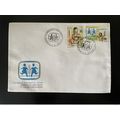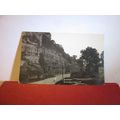Wisbech, Cambridgeshire - River Nene & North Terrace - Dennis postcard c.1960s
- Condition : Used
- Dispatch : 2 Days
- Brand : None
- ID# : 213602105
- Quantity : 1 item
- Views : 227
- Location : United Kingdom

- Seller : justthebook (+1695)
- Barcode : None
- Start : Thu 24 Nov 2022 10:49:33 (EDT)
- Close : Run Until Sold
- Remain : Run Until Sold
Checks/Cheques
 for 1 item(s) edit
for 1 item(s) edit
Shipping Calculator
More Listings from This Seller view all
Seller's Description
- Postcard
- Picture / Image: River Nene and North Terrace, Wisbech [Cambridgeshire]
- Publisher: ETW Dennis, W.3003
- Postally used: no
- Stamp: n/a
- Postmark(s): n/a
- Sent to: n/a
- Notes / condition:
Please ask if you need any other information and I will do the best I can to answer.
Image may be low res for illustrative purposes - if you need a higher definition image then please contact me and I may be able to send one. No cards have been trimmed (unless stated).
------------------------------------------------
Postage & Packing:
Postage and packing charge should be showing for your location (contact if not sure).
No additional charges for more than one postcard. You can buy as many postcards from me as you like and you will just pay the fee above once. Please wait for combined invoice. (If buying postcards with other things such as books, please contact or wait for invoice before paying).
Payment Methods:
UK - PayPal, Cheque (from UK bank) or postal order
Outside UK: PayPal ONLY (unless otherwise stated) please. NO non-UK currency checks or money orders (sorry).
NOTE: All postcards are sent in brand new stiffened envelopes which I have bought for the task. These are specially made to protect postcards and you may be able to re-use them. In addition there are other costs to sending so the above charge is not just for the stamp!
I will give a full refund if you are not fully satisfied with the postcard.
----------------------------------------------
Text from the free encyclopedia WIKIPEDIA may appear below to give a little background information (internal links may not work) :
*************
Wisbech (/ˈwɪzbiːtʃ/ WIZ-beech) is a market town, inland port and civil parish in the Fenland district in the Isle of Ely in Cambridgeshire, England. In 2011 it had a population of 31,573. The town lies in the far north-east of Cambridgeshire, bordering Norfolk and only 5 miles (8 km) south of Lincolnshire. The tidal River Nene running through the town is spanned by two road bridges.
Etymology
The place name 'Wisbech' is first attested in the Anglo-Saxon Chronicle for the year 656, where it appears as Wisebece. It is recorded in the 1086 Domesday Book as Wisbece. The name Wisbech is popularly believed to mean "on the back of the (River) Ouse", Ouse being a common Celtic word relating to water and the name of a river that once flowed through the town. A more scholarly opinion is that the first element derives from the River Wissey, which used to run to Wisbech, and that the name means 'the valley of the river Wissey'.[1] A wide range of spellings is found on trade tokens in the Wisbech & Fenland Museum and in newspapers, books, maps and other documents, e.g. Wisbece, Wisebece, Wisbbece, Wysbeche, Wisbeche, Wissebeche, Wysebeche, Wysbech, Wyxbech, Wyssebeche, Wisbidge, Wisbich and Wisbitch,[2][3] until the spelling of the name of the town was fixed by the local council in the 19th century.[4]
Pre-Roman
During the Iron Age, the area where Wisbech would develop lay in the west of the Brythonic Iceni tribe's territory. Icenian coins have been found in both March and Wisbech.[5]
Anglo-Saxon
Like the rest of Cambridgeshire, Wisbech was part of the Anglo-Saxon Kingdom of East Anglia.
One of the first authentic references to Wisbech occurs in a charter dated 664 granting the Abbey at Medeshamstede (now Peterborough) land in Wisbech[6] and in 1000, when Oswy and Leoflede, on the admission of their son Aelfwin as a monk, gave the vill to the monastery of Ely.[7]
Norman
In 1086, when Wisbech was held by the abbot, there may have been some 65 to 70 families, or about 300 to 350 persons, in Wisbech manor. However, Wisbech (which is the only one of the Marshland vills of the Isle to be mentioned in the Domesday Book) probably comprised the whole area from Tydd Gote down to the far end of Upwell at Welney.[8]
A castle was built by William I to fortify the site. At the time of Domesday (1086) the population was that of a large village. Some were farmers and others fishermen.[9]
Richard I gave Wisbech a charter. King John of England visited the castle on 12 October 1216 as he came from Bishop's Lynn. Tradition has it that his baggage train was lost to the incoming tide of The Wash. Treasure hunters still seek the lost royal treasure.[10]
Twenty years later the castle was 'utterly destroyed' by marine flooding; however it was rebuilt by 1246 when the constable or keeper was Wm Justice.
The register of Bishop John Fordham of Ely appoints a Master of the Grammar Scholars in 1407 (the Grammar School dates back to 1379 or earlier).
Early Modern
Edward IV visited Wisbech in 1469.[11]
The Charter of Edward VI, 1 June 1549 raised the town to a corporation. In the same year Wm. Bellman gave a plot of land for the Wisbech Grammar School school-house.[12] In 1333–4 the kiln in the town was producing 120,000 bricks. There were several fisheries belonging to the manor of Wisbech and in the 1350s the reeves of Walton and Leverington each sent a porpoise to Wisbech Castle, and the reeve of Terrington a swordfish.[13]
During the reigns of Elizabeth I, James I, and Charles I, there was a state ecclesiastical prison in Wisbech for Catholics, many of whom died there owing to the insanitary conditions.[14] A dispute arising amongst the Catholic prisoners was widely known as the Wisbech Stirs. In 1588 it is claimed that Robert Catesby and Francis Tresham were committed to Wisbeach Castle on the approach of the Spanish Armada.[15] Among those held there was John Feckenham, the last Abbot of Westminster. The palace was demolished and replaced with John Thurloe's mansion in the mid-17th century, and Thurloe's mansion demolished in 1816 by Joseph Medworth, who also developed The Circus comprising The Crescent, Union Place and Ely Place with Museum Square and Castle Square familiar as the settings in numerous costume dramas.
In 1620 former Wisbech residents William White and Dorothea Bradford (née May) sailed on the Mayflower to the New World with her husband William Bradford later to be Governor Bradford.[16]
English Civil War and Commonwealth
Across the Eastern Counties, Oliver Cromwell's powerful Eastern Association was eventually dominant. However, to begin with, there had been an element of Royalist sympathy within Wisbech. Bishop Matthew Wren was a staunch supporter of Charles I but even in 1640 was unpopular in Wisbech, after discovering his absence from a 'Commission of Sewers' meeting at the Castle, a crowd of soldiers plundered shops of some of his supporters. The town was near the frontier of the Parliamentary and Royalist forces in 1643. The Castle and town were put into a state of readiness and reinforced. A troop of horse was raised. Locally based troops took part in the Siege of Crowland in 1642. The town controlled the route from Lincolnshire to Norfolk particularly during the Siege of King's Lynn in 1643 as it prevented reinforcements by land of the Royalists holding the Norfolk port.[17]
A town library was founded c. 1653.[18]
In 1656 the bishop's palace was replaced by Thurloe's mansion however after the Restoration the property reverted to the See of the bishop of Ely.[19]
Eighteenth century
Soap was taxed and manufacturers such as the Wisbech Soap Company required a licence. Based in an Old Market property facing the river, they were able to receive oil from the blubber yards of King's Lynn as well as coal, wood for casks and olive oil used in making the coarse, sweet and grey (speckled) soaps they produced from 1716 to about 1770.[20]
Wisbech's first workhouse located in Albion Place opened in 1722, it could accommodate three hundred inmates and cost £2,000.[21]
Peckover House on North Brink by the Nene
Peckover House, with its walled garden, was built in 1722 and purchased by the Quaker Peckover banking family in the 1790s. It is now owned by the National Trust (NT). Formerly known as Bank House, the house was renamed in honour of the Peckover family by the NT. The Peckover Bank became part of Barclays Bank.
In the 17th century, the inhabitants of the Fens became known as the "Fen Tigers" for their resistance to the draining of the common marshes.[22] But the farmland created by drainage transformed Wisbech into a wealthy port handling agricultural produce. It was from this period that much of the town's architectural richness originates.
Wisbech sat on the estuary of the River Great Ouse, but silting caused the coastline to move north, and the River Nene was diverted to serve the town.
In 1781 Wisbech Literary Society was formed at the house of Jonathan Peckover.[23]
Theatres in both Pickard's Lane (a barn) and North End and a third (temporary structure) in the High Street are referred to. A new theatre (now part of the Angles Theatre had been built in Deadman's Lane (later Great Church Street, now Alexandra Road) now Angles Theatre c1790. It was used to hold the auction of the contents of the castle, part of the estate of Edward Southwell on 8 November 1791.[24]
Nineteenth century
Wisbech Regatta was first held in 1850.[25]
June 1858 The Russian Gun. —During the past week a brass plate has been added to the Russian Gun, bearing the inscription:— "This trophy of the late Russian War, presented by Queen Victoria to the Burgesses of Wisbech. Thomas Steed Watson, Mayor, 1858.[26]
The Isle of Ely and Wisbech Advertiser was founded in 1845.[27]
The new Wisbech & Fenland Museum building opened in 1847 and continues to collect, care for and interpret the natural and cultural heritage of Wisbech and the surrounding area.[28]
On 1 March 1848 Eastern Counties Railway opened Wisbeach (sic) station (later renamed Wisbech East railway station). It closed on 9 September 1968.
In the 1853–54 cholera epidemic 176 deaths were reported in the town in 1854.[29] The Wisbech death rate (49 per 10,000) was the fourth highest in the country. The following year saw £8,000 expenditure on sewerage works and £13,400 on water supplies.[30]
On Sunday 29 June 1857 a mob entered the town and broke the Corn Merchants windows and seized corn and demanded money from shopkeepers. On July the gentry and traders by beat of drum recruited about 500 men and went to Upwell and took 60 and placed them in irons. On 4 September a Report was made to the Lords Justices of 14 malfactors condemned at Wisbech for a riot, when 2 were ordered for execution the following Saturday and twelve for transportation.[31]
In 1864 the Castle estate was purchased by Alexander Peckover. In 1932 his descendant Alexandrina Peckover gave to the Borough council a piece of land to be laid out as an ornamental garden adjoining the War memorial.[32]
In August 1883 Wisbech and Upwell Tramway opened. It eventually closed in 1966 (passenger services finished in 1927). The steam trams were replaced by diesels in 1952.
The Wisbech Standard newspaper was founded in 1888.[33]
Twentieth century
In April 1904 the borough council contracted with the National Electric Construction Company Ltd for the installation of electric street lighting.[34]
On 30 October 1913 the Riot Act was read by the mayor in response to civil unrest in response to the death of the popular surgeon Doctor Horace Dimock. He had been arrested on charges of criminal libel on the information of Dr Meacock. On hearing that Dimock had taken his own life a crowd formed and smashed the windows of Meacock's residence on the North Brink. The police charged the crowds and cleared the streets.[35]
The Wisbech Canal joining the River Nene at Wisbech was subsequently filled in and became the dual carriageway leading into the town from the east (now crossing the bypass).[36]
Wisbech War Memorial was unveiled on 24 July 1921.[37]
In 1929 The Wisbech Pageant was held at Sibalds Holme Park on 4–5 September. The Pageant Master was Sir Arthur Bryant who had experience with the Cambridgeshire Pageant 1924, Oxfordshire Pageant 1926 and London Empire Pageants of 1928 and 1929. The Wisbech total attendance was estimated in excess of 25,000 people.[38]
In 1934 part of Walsoken parish, Norfolk was merged with Wisbech, bringing with it the schools, shops and public houses but leaving the church and much of the rural part in Norfolk. The suburb of New Walsoken is now largely built up. A boundary marker in Wisbech Park was erected to record the event.[39] Ring's End was transferred from Wisbech to Elm.[40]
In 1939 Wisbech Society and Preservation Trust was founded to safeguard the history and heritage of Wisbech.[41]
In 1949 the borough celebrated the 400th anniversary of receiving its charter. The Pageant in Sibalds Holme Park, Barton Road featured over 600 performers.[42][43]
The first Wisbech Rose Fair was held in 1963 when local rose growers sold rose buds in the parish church in aid of its restoration.[44]
On 21 September 1979, two Harrier jump jets on a training exercise collided over Wisbech; one landed in a field and the other in a residential area. Two houses and a bungalow were demolished on Ramnoth Road, causing the death of Bob Bowers, his two-year-old son Jonathan Bowers, and former town mayor Bill Trumpess.[45]
The 5-mile (8 km), £6 million A47 Wisbech/West Walton bypass opened in spring 1982. The Horsefair shopping centre opened by Noel Edmunds in 1988 is on part of Hill street and the site of the old Horse Fair.[46]
In 1990 further county boundary changes brought a small area of Walsoken, Norfolk into Wisbech.[47]
Contemporary
In 2009 Oxford Archaeology East (OAE) organised a dig at Wisbech Castle to search for remains of the Bishop's Palace.[48] Large numbers of local volunteers took part and hundreds of children visited the dig site. Later in the year a group of volunteers formed Fenland Archaeological Society (FenArch). The Society has carried out a number of digs including the Manea Colony dig organised by Cambridge Archaeology Unit (CAU).[49]
An initiative to deal with the issues of derelict buildings in the town was initiated in 2013. This led to the £1.9M Wisbech High Street four year project. Currently (2021) a number of sites in the high street are covered in scaffolding whilst work is in progress. Another landmark property, Ely House was also surrounded by scaffolding while substantial reapairs took place. Separately the Wisbech & Fenland Museum currently (April 2021) is closed whilst scaffolding supports roof replacement. [50] Following the publication of the Friends of Wisbech & Fenland Museums series of booklets Images of Wisbech contains images taken by Geoff Hastings, research uncovered an archive of images from the Wisbech Borough council, some of these were incorporated in Lost Images of Wisbech published in 2020.[51]
The town is well known for horticulture, in 2018 the town won the business improvement district (BID) category gold award at the Royal Horticultural Society's (RHS) annual Britain in Bloom awards ceremony.[52] In 2019 the town received Gold Award in the large town category in the RHS Anglia in Bloom completion. Waterlees was 'Best in Group' and Gold Award in Urban category and St Peters Gardens a Gold Award in the Small Parks category.[53]
Listing Information
| Listing Type | Gallery Listing |
| Listing ID# | 213602105 |
| Start Time | Thu 24 Nov 2022 10:49:33 (EDT) |
| Close Time | Run Until Sold |
| Starting Bid | Fixed Price (no bidding) |
| Item Condition | Used |
| Bids | 0 |
| Views | 227 |
| Dispatch Time | 2 Days |
| Quantity | 1 |
| Location | United Kingdom |
| Auto Extend | No |









![Bath Bomb - Unicorn Princess [ ]](https://pic.ebid.net/upload_small/7/1/3/1746169191-30014-3.jpg)




